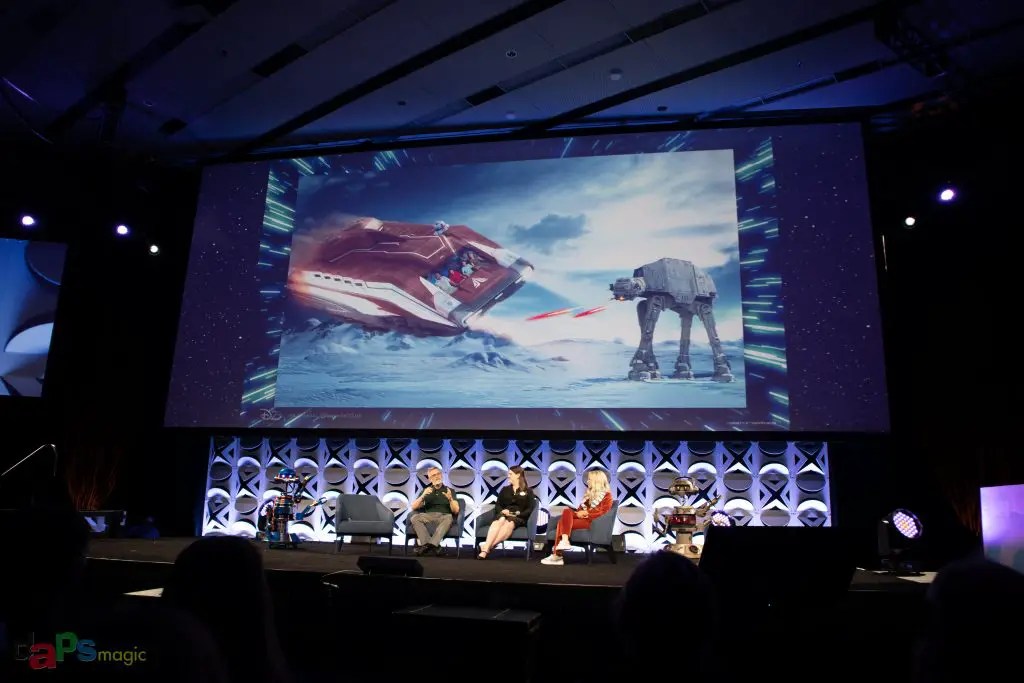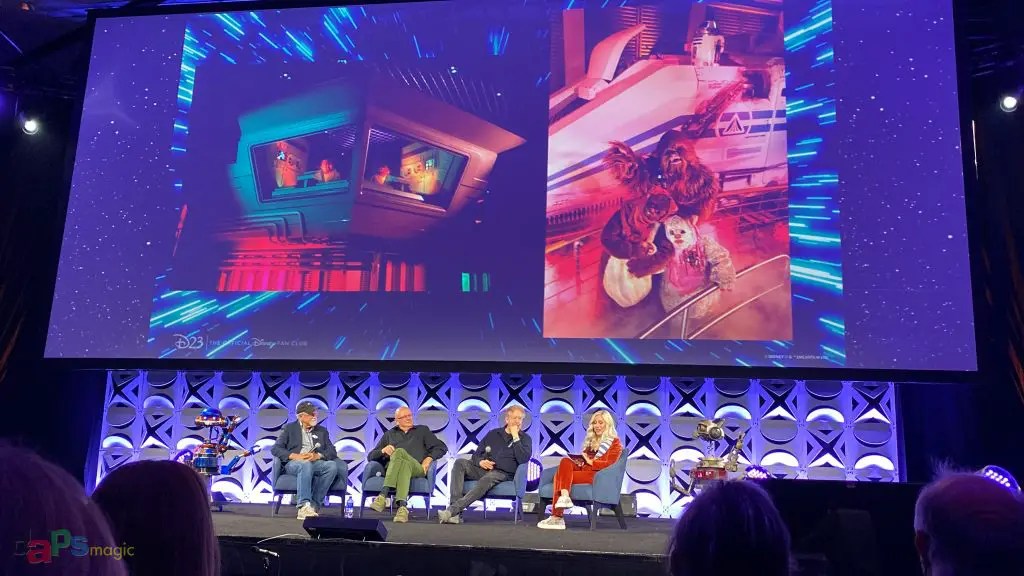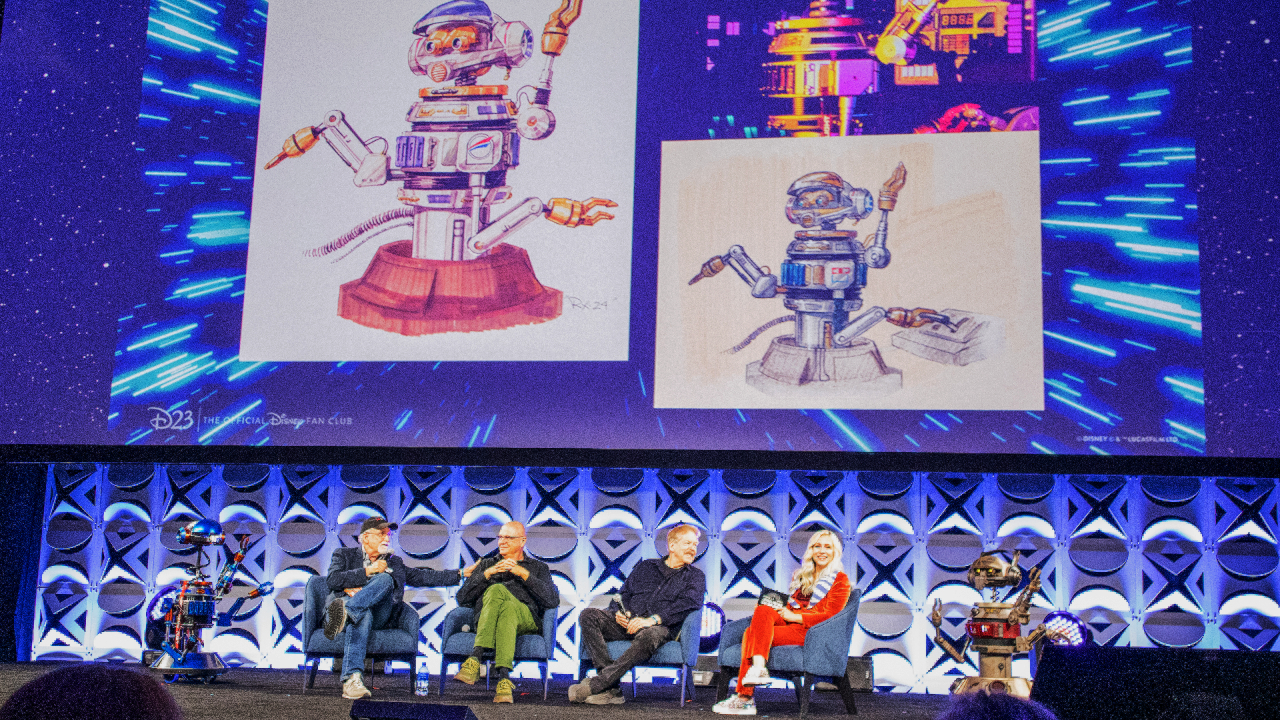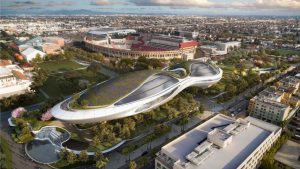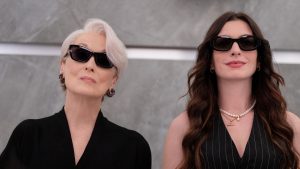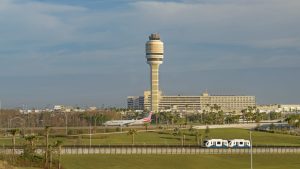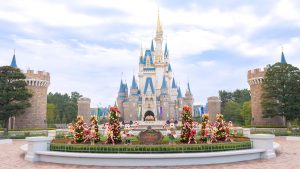On Friday, May 27, Star Wars Celebration commemorated the 35th anniversary of the iconic Star Tours attraction by bringing together some of the creative team who worked on the project over the years. Tony Baxter (former senior vice president of creative development at Walt Disney Imagineering [WDI]), Dennis Muren (senior VFX supervisor and creative director at Industrial Light & Magic [ILM]), and Chris Runco (principal concept designer at WDI, including Captain Rex) represented the team who first brought the Star Tours attraction to life. Later in the program Meghan Short (senior media producer at WDI) and Bill George (VFX supervisor at ILM) spoke about the updates made for 2011’s Star Tours – The Adventures Continue. D23 Official Disney Fan Club head, Michael Vargo kicked off the event, and Ahsoka Tano voice actor and Her Universe founder, Ashley Eckstein moderated the panel.
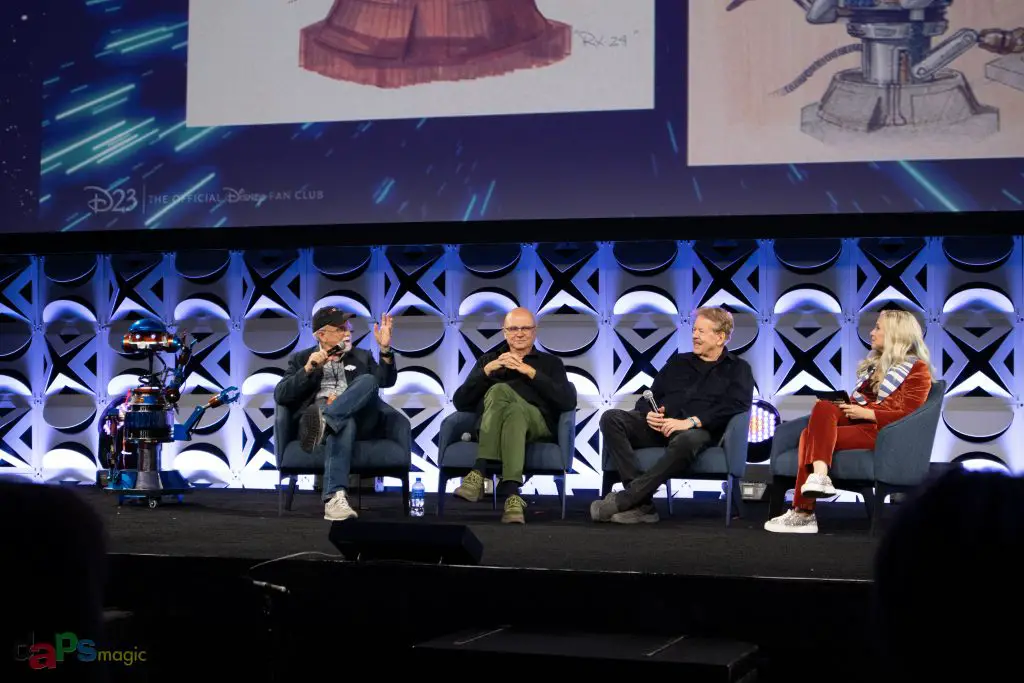
“Welcome aboard. This is Captain Rex from the cockpit. I know this is probably your first flight and it’s mine too, ha ha! Well, it looks like we’ll have a smooth flight to Endor.” When fans first heard these immortal words spoken by RX-24 on opening day, January 9, 1987, little did they know the epic adventure that was in store for them, or what it took to make “lightspeed to Endor” possible. Star Tours marked the first time an attraction based around the Star Wars film franchise landed in a theme park. According to Tony Baxter, “for Disneyland to stay relevant, it had to stay with the culture of the time.” The concept of using intellectual property in the parks, something that is commonplace today, was new and risky in the late 1980s. Fans were unsure about replacing the popular Adventure Thru Inner Space attraction with a property straight out of Hollywood. Imagineers had a struggle ahead of them to design an attraction that would do justice to the source material and be a satisfying replacement for a beloved ride.
The original plans for Star Tours centered on a roller coaster that would feature multiple ride variations, utilizing a switch track and an elevator. However, space limitations made this idea impractical. Producer/director Randy Bright (Magic Journeys, Oh Canada!, Impressions de France), suggested a simulator ride system from his experience with military simulators in the UK. The motion achievable with a simulator was unique and groundbreaking at the time, but came with challenges. Imagineers had to figure out how to create a system that could handle the strain of running constantly all day, every day and could load and unload guests quickly.
Meanwhile, Dennis Muren’s VFX team was crafting the film guests would view during their intergalactic adventure. Although sets and models still existed from the Star Wars original trilogy, their scale was too large for this purpose. All-new sets and models had to be built and filmed. Unlike a watching traditional movie, guests would be in motion during this experience. Research showed there was a limit to how long the attraction could run before riders would get motion sick—about 4 ½ minutes. Shots for the film were short, about 20 seconds maximum, and had to maintain a clear view of the horizon. Clever editing techniques, like laser flashes and screen blurring, helped the clips blend into a cohesive whole. The physical limitations of the ride vehicle bled over into the film too. The vehicle could only go up and down to as far as the hydraulics would allow. Filmmakers had to keep these restrictions in mind to ensure the motion and visuals stayed in sync and didn’t break the illusion. Baxter shared that the vehicle had zero physical energy (ability to go up or down) coming out of the ice cave sequence, and a creative solution was needed to continue the story. The Starspeeder getting caught in the Death Star’s tractor beam was the perfect link to move things along, both narratively and physically.
At this point in the panel, life-size Captain Rex and DJ Rex took the stage and provided a segue for Chris Runco to recall how he created the character. Fans owe the idea of a droid pilot to George Lucas, who suggested that the cabin would feel more three-dimensional with a physical pilot in the cab. On a visit to the model shop, Lucas drew a stick figure of what would become RX-24. Runco found miscellaneous parts at a junk store in Burbank to achieve the desired “used future” look. A favorite detail of his was a “remove before flight” warning tag. Other droids that appear throughout the attraction had a similarly creative origin. The goose robots from America Sings were stripped of their feathers and transformed into the talking security droids in the queue. The MSE (mouse) droids were kitbashed from an assortment of model sets from Toys“R”Us. Fittingly, this ingenuity continues today with amateur droid builders who take pride in using nontraditional parts to assemble their masterpieces.
After attendees were treated to a showing of the original version of Star Tours on the big screen, Meghan Short and Bill George made their way onstage to talk about the development of the current iteration, Star Tours – The Adventures Continue. After a twenty-three year residency, Star Tours closed at Disneyland on July 27, 2010 to make way for a new and exciting reimagining. Short shared that a jukebox was the inspiration behind the update, with interchangeable pieces that could occur randomly and be swapped out periodically. This new format gave the opportunity to explore the worlds of Star Wars more deeply, such as the retreat after the battle on Hoth from The Empire Strikes Back, or the true scale of the pits within the Death Star. The film assets for these scenes largely existed, but they still had to be modified to fit the ride and upgraded to current technology standards. Digital formatting allowed for more flexibility with camera motion, with the shared advantage that motion sickness was a lesser issue. However, the timing had to be extremely precise so that each jukebox clip fit exactly within the given constraints. George and his team used reference footage to map out exactly how Chewbacca would hit the Starspeeder’s windshield and slide off and how Leia’s original phrase, “help me Obi-Wan, you’re my only hope” from A New Hope could be modified to “help me Star Tours.” New locations like Crait and Batuu illustrate the vision for the future—to keep Star Tours relevant to the culture of today, much like Star Tours itself was intended to do in 1987.
Star Tours was a chance for Disney to go an entirely new direction to incorporate current IP into the parks. Although it was seen as a risky move at first, fans’ favorable reactions to the new approach vindicated creatives’ decision. Ultimately, the attraction’s success can be attributed to the same strong principles that Walt Disney valued highly, the power of the truth and good triumphing over evil. Here’s to many more years of galactic mishaps and getting used to our programming!
What do you remember about your first ride on Star Tours? Which Adventures Continue scene is your favorite? What new location would you like to see added? Tell us in the comments below!
Buh-BYE!

































